The Building Process
Once the wood is selected and allowed to acclimate, the staves are laid-out. They are then cut-out on the band-saw after which the edges are canted. The staves that present defects are removed and not used.
After being glued together the drum body is mounted on a lathe to be turned round and sanded smooth. The bearing edge, foot and mortises for mounting the hardware are all created while the drum is mounted on the lathe.
As the drums come off the lathe the inner edges get shaped and through holes are drilled, after which they receive a hand rubbed oil finish. The hardware and skins are then mounted. Aside from the tuning hardware there is no metal on or in the shell. No reinforcement hoops inside or outside the drums.
There is no automation in any of this, it is all done by hand, by me.
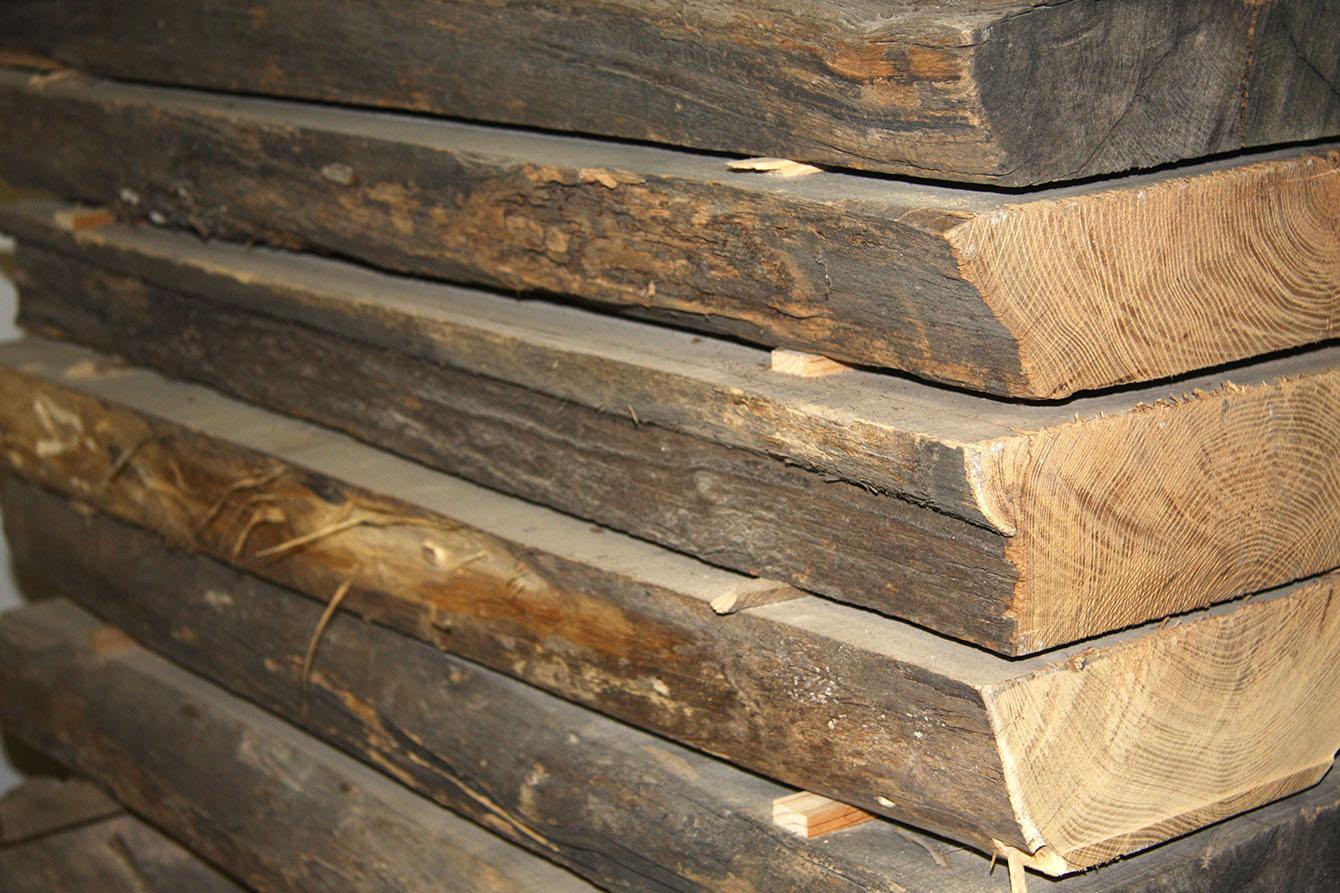
production process
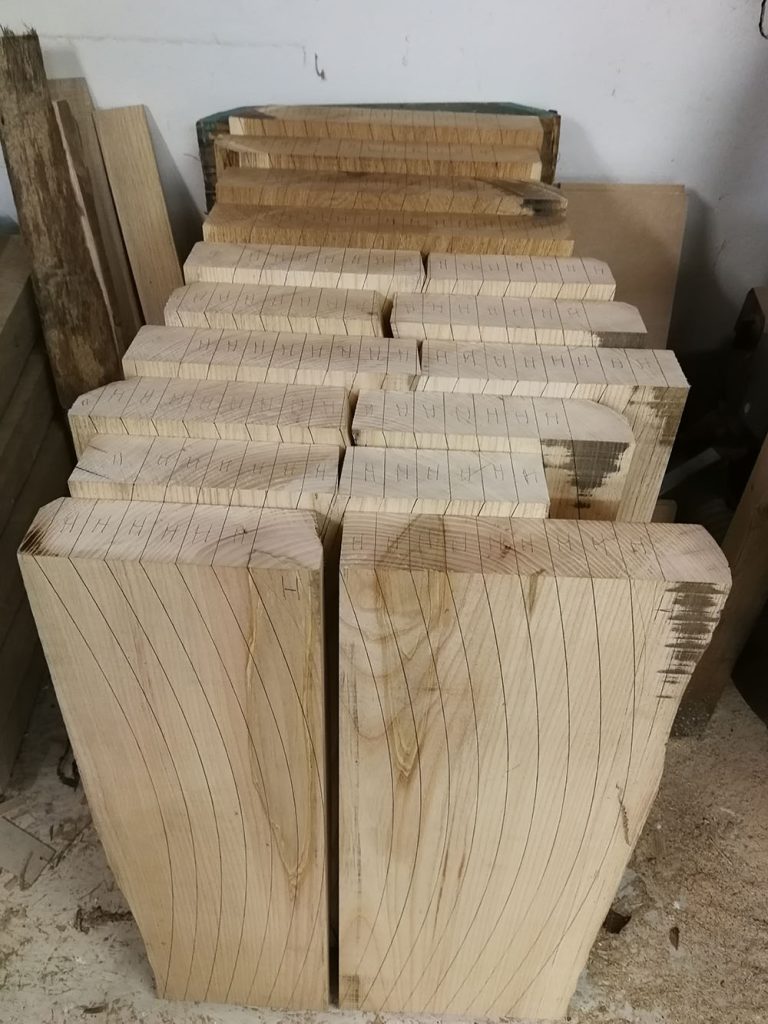
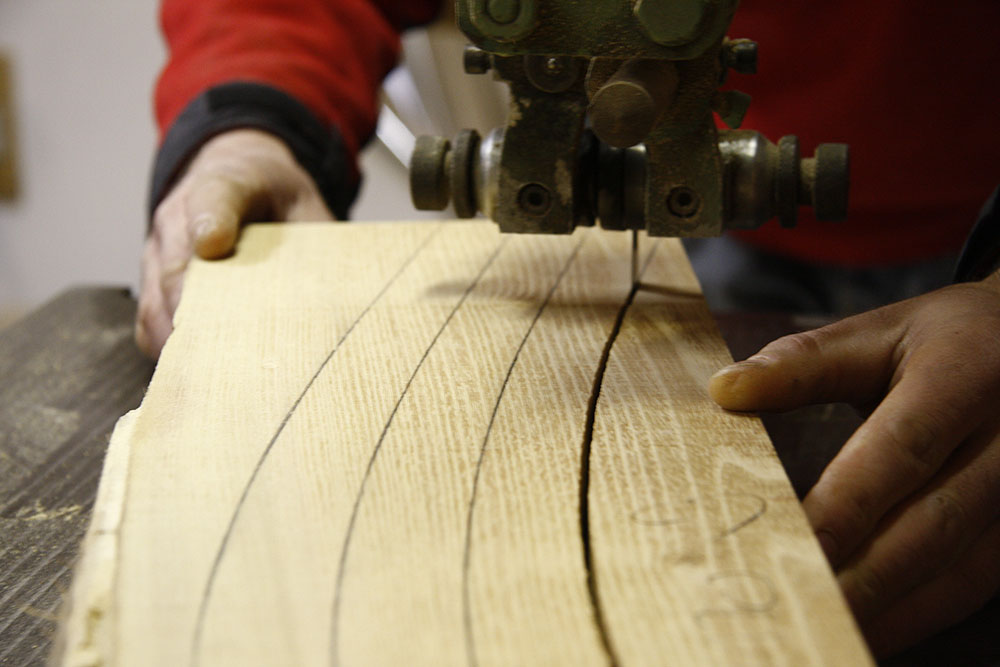
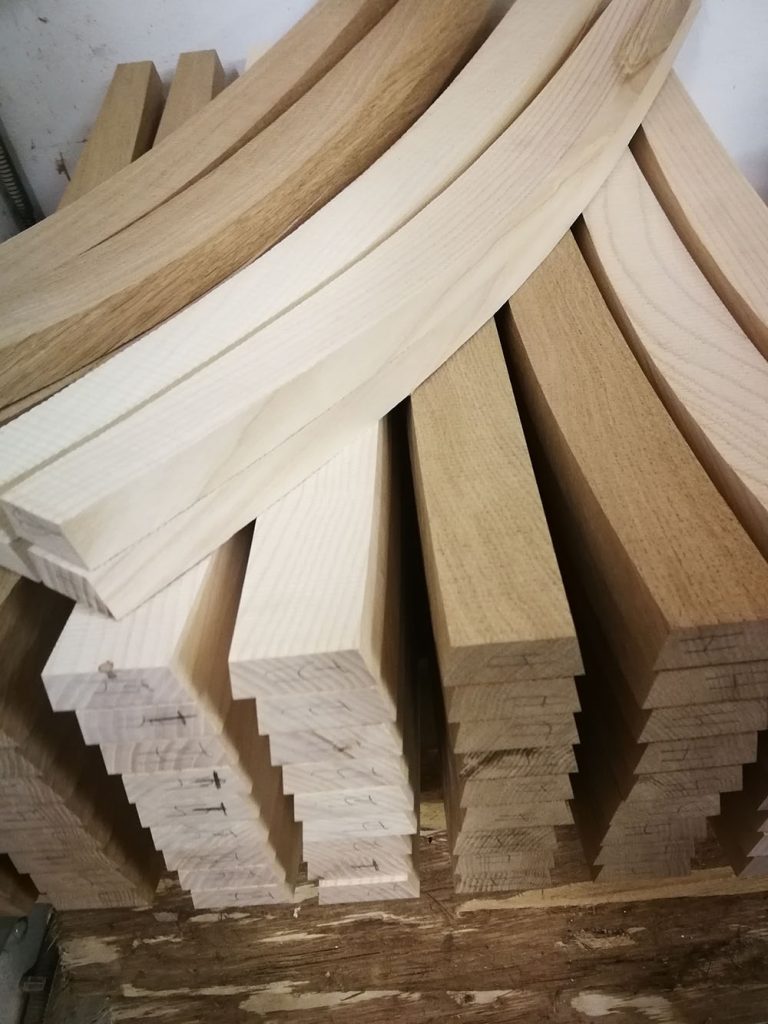
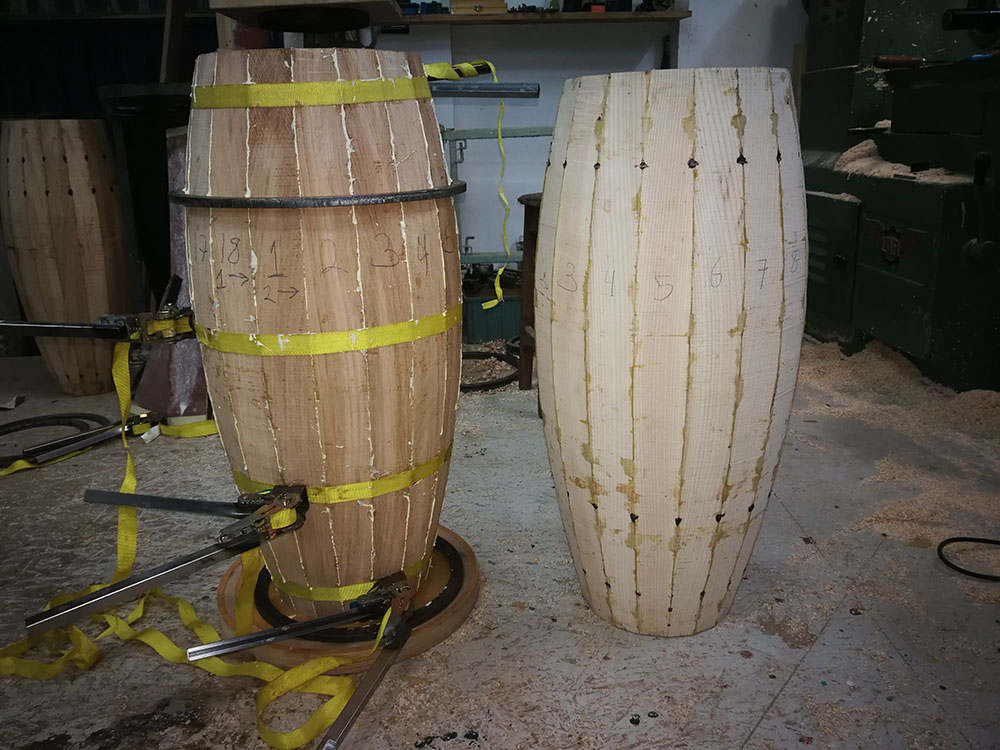
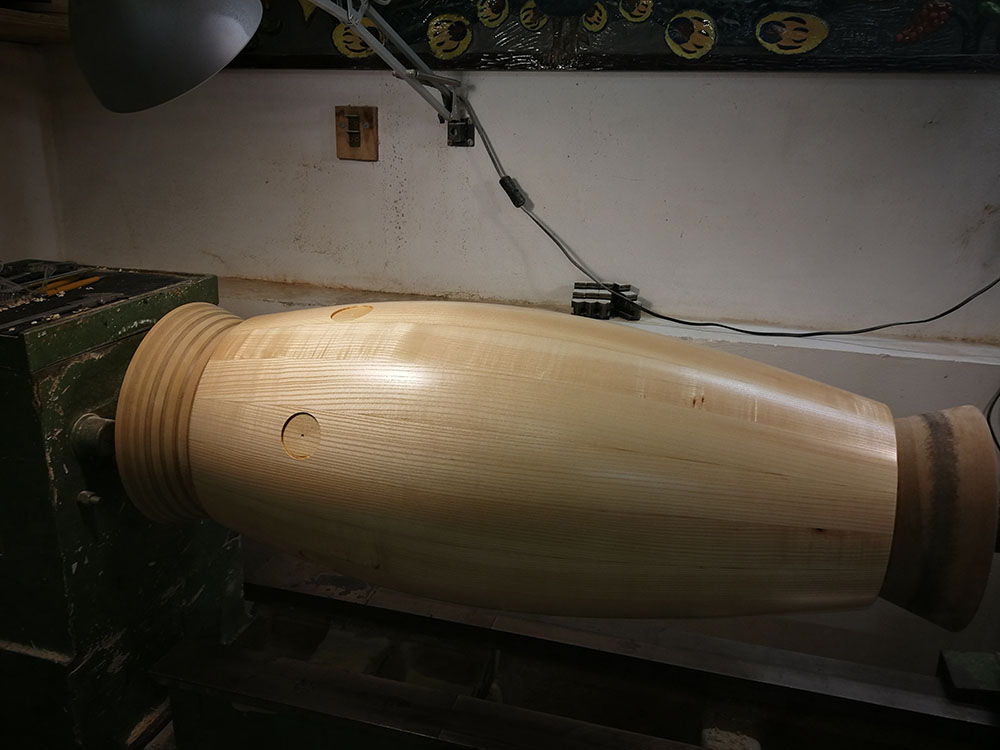
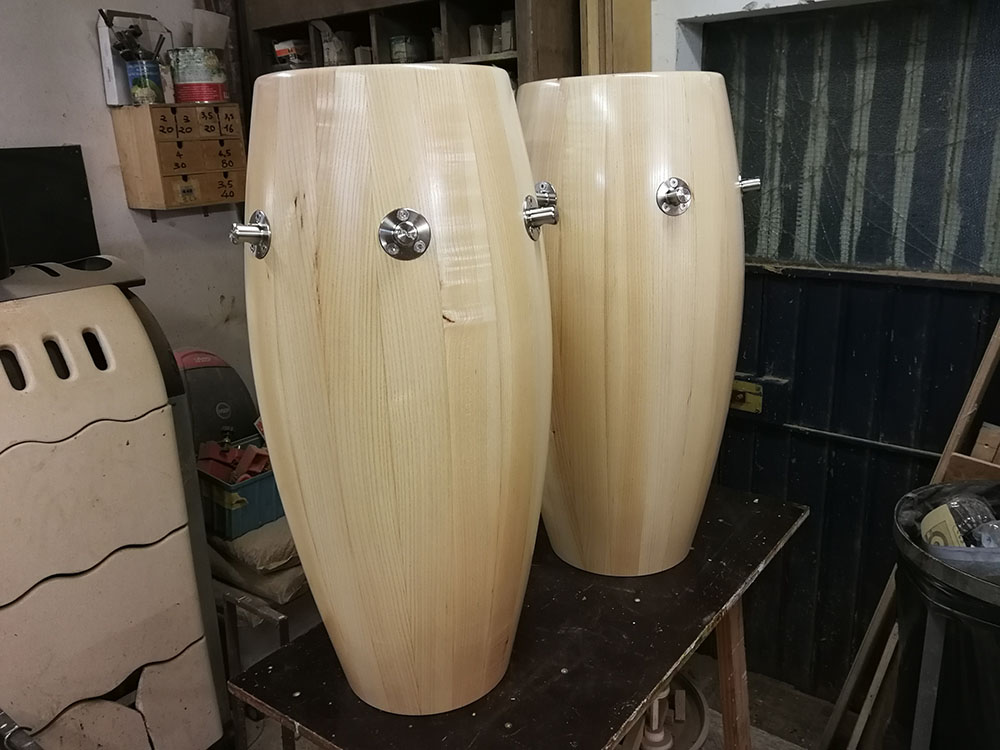
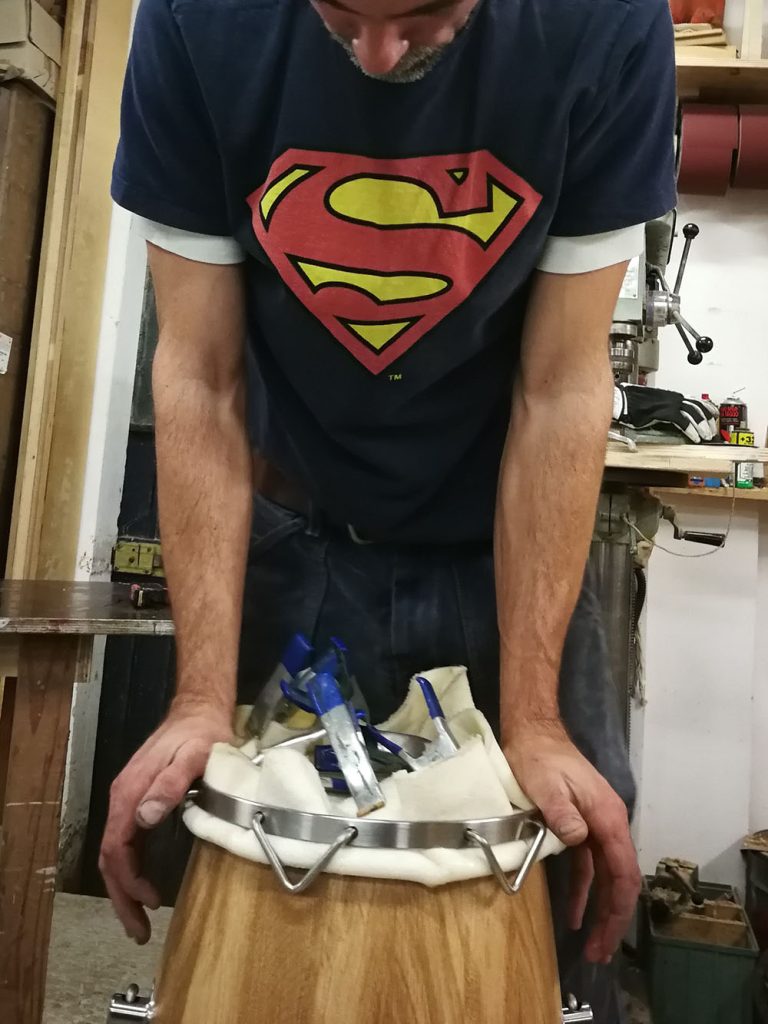
To build good drums, my materials are my everything.
Out of personal conviction and respect for our planet and its collective inhabitants, I prefer using woods that I can source locally and that are not in some way protected for environmental or legal reasons. If the wood that you want happens to be something that I can not find locally I will happily try to find it for you, as long as it is not on the endangered list. I have experimented with several kinds of woods and do not limit myself to any single species, however I try to use locally harvested hardwoods like acacia, oak and ash, with acacia being my personal favorite.
Most importantly, when I make a set of drums (whether it’s two, three, four or more drums) I try to get all of them out of wood from the same tree. This guarantees a similar timbre throughout the family of drums and means that the set is really one instrument that is meant to stay together and be played together. Link matched set
Rules of thumb, considerations and opinions.
All woods are not created equal. Some are light, some are heavy. Some are soft and some are hard. Some are more interesting to look at than others. Some are more difficult to work with than others and of course some are more expensive than others. All of these factors have an effect on the final outcome, performance and cost of the drum that you would like to have made.
Generally speaking, harder woods with long fibers make better congas than other woods. It is not by chance that Ash is the workhorse of the high end conga world. There is also something to be said about mass and thickness and how they affect a drum’s performance. Thin walled lightweight shells are very lively, they normally have a lot of projection due to the high level of overtones they will produce. Thicker heavier shells are usually dryer, more controlled and generally warmer in tone. Depending on the intended use of the drum, if it’s for studio use or for live situations, these are characteristics that can be wanted or not. Personal preference is also a big factor, in the studio one doesn’t necessarily need a lightweight drum but might like a livelier drum, or depending on the person, even for live settings a heavy drum might be preferred for its sound stability.
Seasons percussion congas are based on afro cuban tradition. Handmade following the rhythm of the seasons, the craftsmanship is exacting and the hardware is innovative. These are the best tumbadora I know how to make, they are what I think a conguero wants to have between his or her legs. Outstanding in any musical setting, whether it be for a pop music session in the recording studio, big band jazz on stage or for a folkloric rumba in the park. These are not consumer drums. These drums are designed to last a lifetime or even more. Seasons makes drums to measure, let us know what you have in mind and we will send you a quote for the drum or set that you want.
